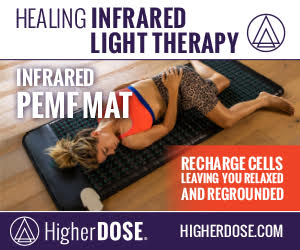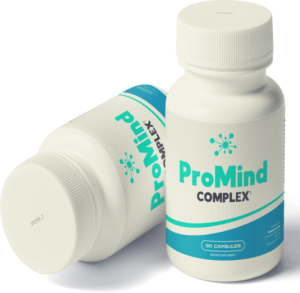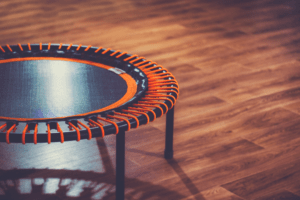Chances are, you’ve heard of heat therapy techniques, such as saunas, steam baths, hot stones, and more, and perhaps knew that their heat promotes relaxation, but you may also have wondered, how does heat promote healing?
Experts state that the main way heat promotes healing is by increasing the flow of blood, and thus in turn also oxygen, essential nutrients, platelets, and more, to damaged tissues, which helps them heal.
Can Heat Really Help You Heal?
What Type of Conditions Can Heat Be Used to Help Heal?
Heat is most commonly used to treat sore joints, muscles, and injuries because it helps relax the soft tissues, thus helping to decrease stiffness, which often results in pain.
Once the soft tissues, including the muscles, connective tissues, vessels, and supportive tissues around the joints, become more relaxed, they also move more freely, which allows you to carry out everyday activities comfortably.
In fact, physical therapists often use heat on their patients during therapeutic exercise to help promote muscle relaxation and make it easier to complete their therapy as well as remain comfortable even well after it’s over.
One study shows that it was even more effective than acetaminophen and ibuprofen in treating low back pain in subjects.
Therefore, it’s a suitable alternative for those looking for a more natural form of pain therapy to help soothe their muscles, relieve stress, and perform physical activities more fluently.
The increased body temperature that heat therapy causes also helps boost the immune system, which in turn also triggers white blood cells that help fight infections, and more.
Does Heat Help With Muscle Recovery Post-Workout?
Heat also helps with muscle recovery because as it transfers from the skin’s surface and deep into the tissues, it also helps increase blood flow to the muscles, which helps them recover and repair post-workout.
One study showed that, when used as a pre-treatment, heat can also help decrease delayed onset muscle soreness and help preserve muscle strength and vessel function during periods of intense training.
Meanwhile, another study concluded that it also helps reduce muscle damage after exercise.
Does Heat Help With Inflammation?
Several reports state that heat therapy helps reduce minor inflammation commonly associated with chronic pain conditions, such as arthritis and tendinosis, when used regularly. This is because it helps lower the protein levels involved in inflammation.
However, experts warn that heat used on swollen, damaged, or infected tissue early on can worsen inflammation.
Therefore, it’s not recommended you use heat on injuries newer than 6 weeks old.
Can Heat Help With Muscle Strains, Spasms, and Strains?
Spasms are a painful condition that causes an involuntary tightening of the muscles, which, in turn, restricts circulation, thus causing the sensory nerves to send pain signals to the brain.
When heat is applied to the skin, it causes the vessels to dilate, thus restoring circulation to the nerves and tissues, which helps tense muscles relax for reduced pain. Therefore, doctors state that it is okay to use heat to treat muscle spasms.
Muscles strains and sprains, which can occur during athletic activities or while simply performing household chores, are also common causes of pain.
However, it is advised you only use heat after the inflammation has gone down to help soothe any muscle stiffness in the affected area.
Why is Heat Better Than Cold for Promoting Healing?
Cold treatments, which can be administered via an ice pack, a cool pad, a chilled water bottle, or even cool water, are also often recommended to help relieve aching muscles and joints.
However, they are used to decrease rather than increase circulation to the area like heat therapy, so they are most often used to treat fresh wounds, injuries, and burns to slow the rate of inflammation, thus reducing the level of swelling and damage to the tissues.
They are also often recommended to help reduce fluid buildup associated with painful inflammatory conditions, such as osteoarthritis, gout, strains, and tendinitis.
Cold treatment also causes sore tissues to temporarily lose feeling; therefore, it can also be used similar to a sedative to help slow pain signals to the brain. Hence, it is also better for soothing migraine pain than heat.
Some athletes also use cold therapy following exercise to reduce delayed onset muscle soreness caused by strength training.
However, unlike heat treatments, which, when used before exercise, help relax the muscles for greater mobility during your training, cold therapy should not be used immediately before exercise because it causes the muscles to tighten, which can lead to injury.
Cold treatment is also not recommended for relieving pain in the lower back because tense muscles are typically to blame. Hence, they can become more constricted by cold, which can make the pain worse.
Heat therapy, on the other hand, increases the flow of blood to the muscles, thus helping them relax, which helps reduce lower back pain.
Because heat helps relax tight, sore muscles, it can also be used to help relieve chronic joint and muscle pain associated with arthritis.
When used post-workout, heat also helps rid lactic acid waste from the muscles, which also contributes to delayed onset muscle soreness after exercise.
However, there are times when heat and cold can be alternated to help treat pain, such as when treating a non-serious injury or when trying to ease the symptoms of osteoarthritis.
In this case, when cold is applied to the affected area first, it causes the blood vessels to contract, which, in turn, reduces circulation and thus helps decrease pain.
Then, once the cold is removed, the heat causes the blood vessels to expand, which improves circulation, thus providing the affected area with essential nutrients to help it heal.
What Type of Heat Treatments Are There?
There are various types of devices used to deliver heat to the skin, including dry and moist heat packs, hot compresses, heat wraps, hot water bottles, and various types of heating pads.
Soaking in a hot bath, hot tub, hot sauna, or even a heated sauna blanket also helps deliver heat to the skin and helps loosen tight muscles.
In fact, infrared sauna blankets, in particular, are shown to deliver many of the same healing benefits of traditional saunas, including help relax tight muscles and prevent the delayed onset of muscle soreness when used following exercise.
They can also be used as a pre-treatment to help warm the muscles before training for maximum performance.
And they are also lightweight and portable, so they can be used just about anywhere and anytime you need to relieve stiffness.
Heated patches and rubs are also other options for soothing achy, contracted muscles.
There are also menthol and methyl salicylate-treated rubs and patches that work by first causing the skin to feel cool and then warm, which helps take away from the pain.
However, many people find the smell unpleasant, so you may opt for a different heat treatment if you don’t want a menthol odor.
When choosing a patch or rub for heat treatment, you should also be sure to read the label carefully because they can cause skin irritations if used improperly.
Paraffin wax is also shown to help reduce muscle tightness when applied to the skin, provided its temperature is low enough not to cause blisters or burns.
However, just like rubs and patches, do not use paraffin wax if you have sensitive skin because it can cause minor breakouts, swelling, or heat rash.
How Do You Use Heat Treatments?
According to experts, when treating minor stiffness or tension, heat therapy can be applied up to 3 times a day for a total of 20 minutes each time, unless your doctor states differently.
However, heat therapy, like a hot bath, can last between 30 minutes and 2 hours to treat more moderate or severe pain. The water should also be kept between 92 and 100 degrees Fahrenheit or 33 and 37.7 degrees Celsius while soaking for the best results.
If you are using a dry heat pack, it can be used for up to 8 hours to help alleviate sore or tense areas. Single-use patches or wraps can also be used for up to 8 hours.
However, moist dry packs should only be used for up to 2 hours.
What are the Risks/Precautions With Heat Therapy?
During heat therapy, the treatment used should actually be warm and not hot to prevent burning the skin.
When applying heat treatments directly to the skin, they should also not be left to work for too long because it can also damage the skin, so be sure to stick to the recommended 20 minute limit for added safety.
In the meantime, should swelling increase in the affected area while applying heat therapy, end your session immediately to avoid further complications.
If pain in the affected area increases, bruising or changes to your skin occur, or you continue to experience discomfort even after 1 week of using heat therapy, contact your doctor immediately because it may be a sign of a more serious issue.
Who Should Not Use Heat Treatments?
Though heat therapy is considered a safe and natural way to help alleviate tight, achy muscles, there are times when it is not recommended you use it.
For instance, people with inflamed, red, or already hot skin should not use heat therapy because it can increase circulation to the area, which can further exacerbate the condition.
Likewise, heat should also not be used on open wounds because it can worsen the injury and cause increased pain and swelling.
Those sensitive to heat should also avoid heat treatments because they can irritate your skin and cause various other discomforts.
If you have a health condition, such as blood pressure or heart disease, you should consult your doctor before using heat therapy to be sure it is safe for you.
The same goes if you have multiple sclerosis, diabetes, dermatitis, deep vein thrombosis, or vascular diseases because they also increase the risk of complications due to the condition.
If you are pregnant, you should also avoid heat treatments, such as hot tubs and saunas, without first getting the okay from your doctor that it poses no risks to your or your unborn child.
Final Thoughts
So there you have it, heat doesn’t just increase relaxation; it also promotes healing in various ways.
However, contrary to common belief, it should not be used to treat new injuries, burns, infections, or open wounds because the increased circulation it causes can increase swelling and inflammation in the affected area, which can ultimately damage the tissues. Hence, instead, use a cold treatment.
But for injuries at least 6 weeks old and older, it is okay to use heat therapy to address lingering pain.
In the meantime, the main benefit of heat is it relaxes stiff, achy muscles and joints, which also helps make them more pliable during movement, so it’s a suitable way to increase mobility in those with a health condition that can restrict movement, such as arthritis, spasms, back pain, or tendonitis.
It can also be used pre-workout to help improve flexibility during training for optimum results, as well as post-workout to help prevent delayed onset muscle soreness.
Heat therapy is also safe to use long-term, especially for chronic pain conditions, like arthritis, and, in some cases, it can even be used in place of medications to help alleviate discomfort and without the risk of dependency.
However, if you are prescribed pain medication, be sure to consult your doctor before altering your therapy because, in most cases, they can work with you to develop a plan to gradually decrease your medication. This way, you experience less pain while in transition.
In the meantime, when it comes to choosing a heat treatment device, be sure to select one that suits your particular issue or circumstances. For instance, if you are looking for an easy, affordable way to receive all-over healing, then you may consider investing in a sauna blanket.







